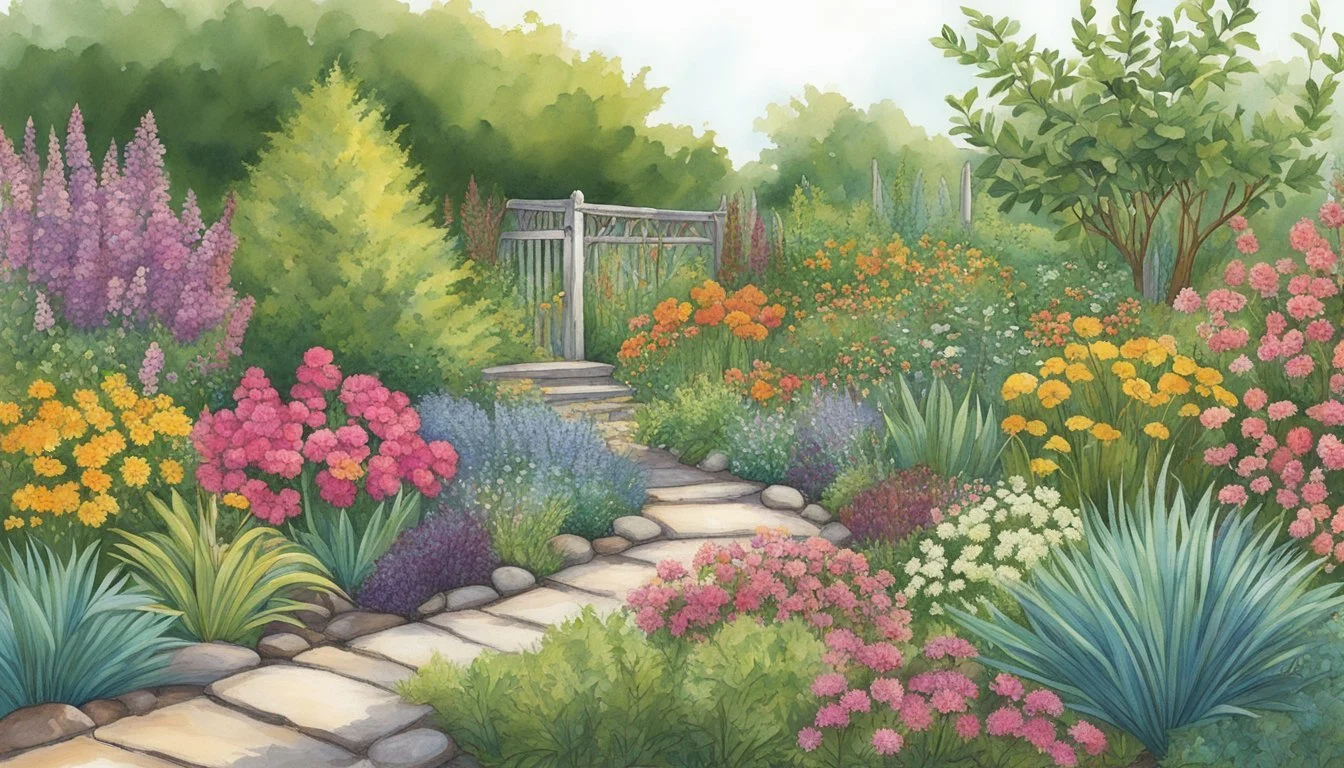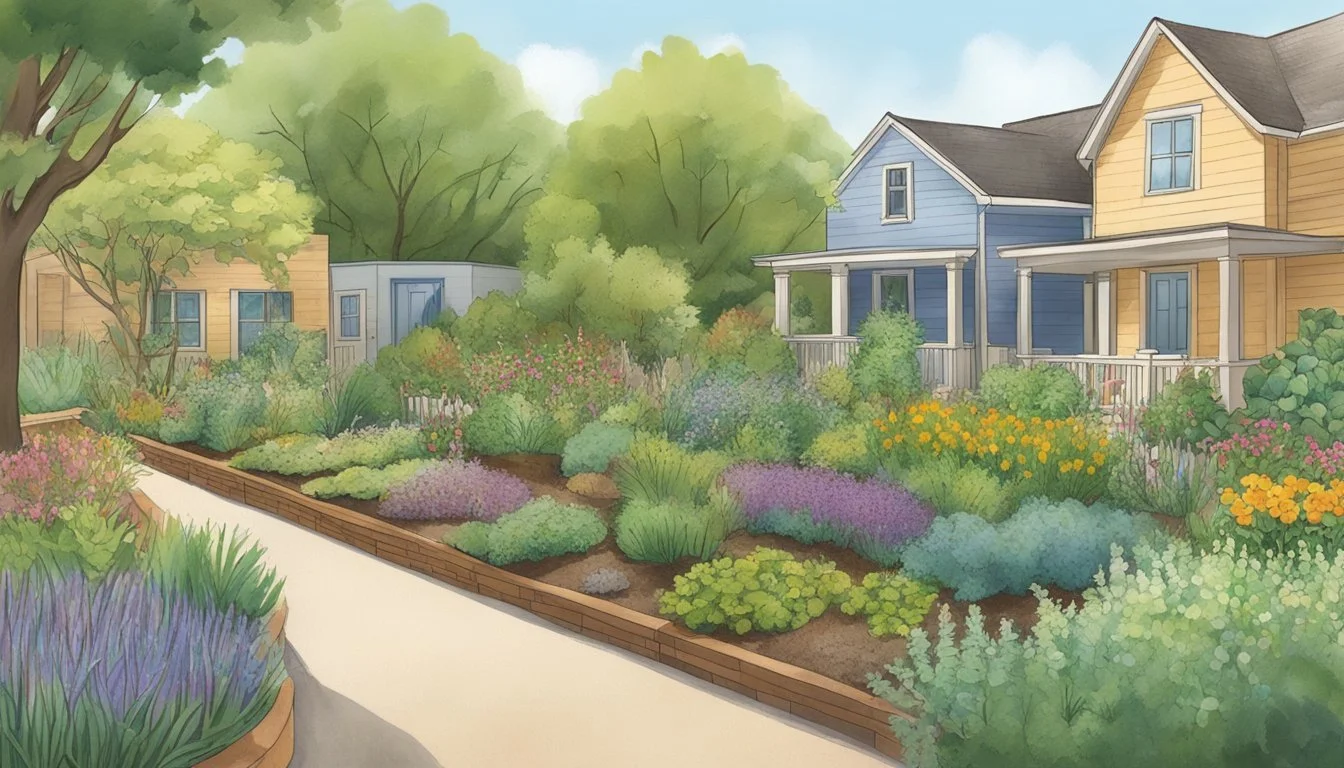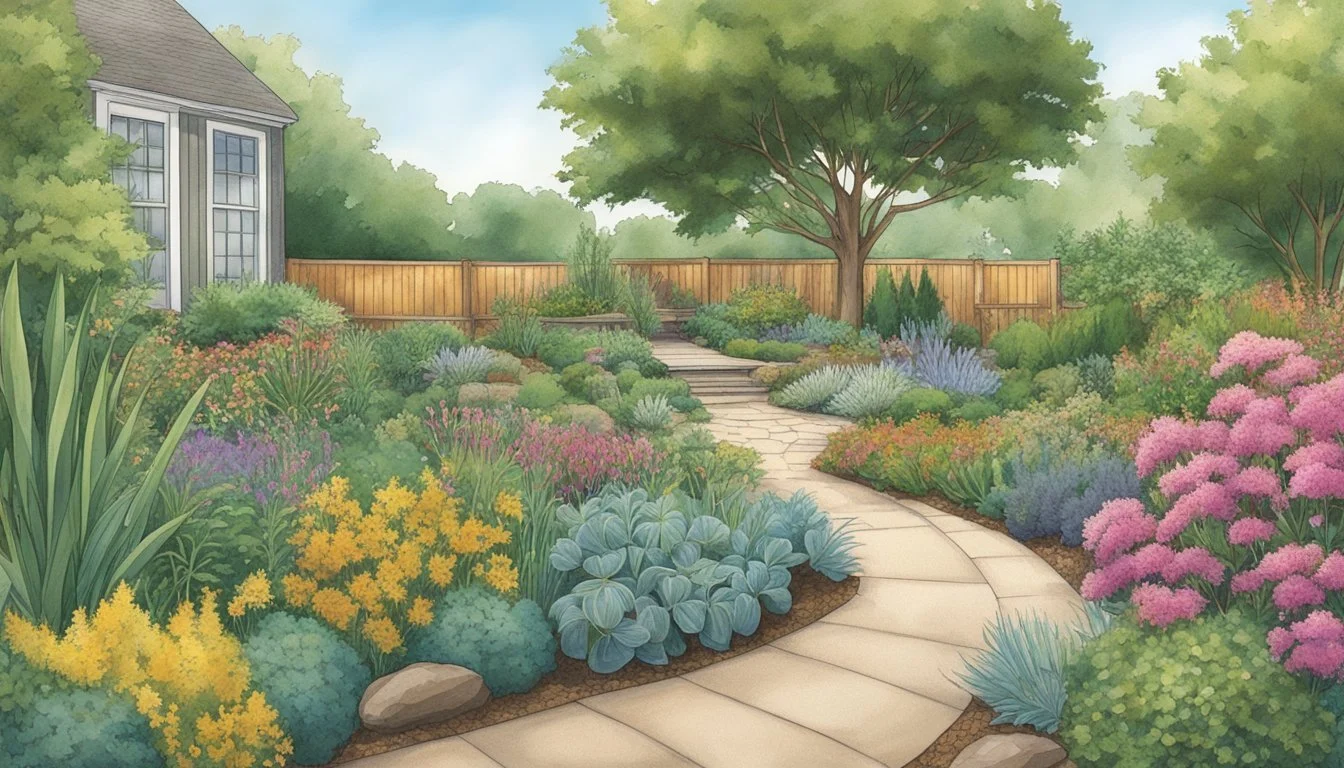Drought-Tolerant Plants in Rhode Island
Best Varieties for Low-Water Gardening
In the diverse landscapes of Rhode Island, gardeners and conservationists alike are turning to drought-tolerant plants to create sustainable and resilient green spaces. These plants are specifically adapted to thrive with minimal watering, an essential trait in the face of fluctuating water levels and dry spells. By choosing species that are naturally inclined to withstand drier conditions, Rhode Islanders can maintain beautiful gardens that are not only environmentally friendly but also cost-effective.
The selection of drought-tolerant plants for Rhode Island includes both native species and well-adapted non-natives. Native plants offer the added benefit of providing crucial habitats for local wildlife and require less maintenance than their non-native counterparts. When designing a garden with water conservation in mind, incorporating plants such as black-eyed Susan and New England aster can add vibrant colors while fitting seamlessly into Rhode Island's natural ecosystem.
A thoughtful approach to landscaping with these resilient species not only reflects a commitment to preserving the state's natural resources but also sets a precedent for responsible gardening practices in Rhode Island. Careful plant selection ensures that gardens are equipped to handle Rhode Island's unique climatic challenges, making every drop of water count.
Essentials of Drought-Tolerant Gardening in Rhode Island
In Rhode Island's fluctuating climate, mastering drought-tolerant gardening is vital. This includes understanding the local climate, conserving water, managing soils effectively, and implementing strategies to maintain robust landscapes.
Understanding Rhode Island's Climate
Rhode Island experiences a range of weather conditions, with hot summers and variable rainfall. Gardeners should consider native plants that are suited to the Northeast's climate and adept at thriving in periods of low water availability. The Rhode Island Native Plant Guide offers information on suitable species that possess the resilience needed for these conditions.
Principles of Water Conservation
Water conservation is key in drought-tolerant gardening. Techniques like mulching and choosing plants with deep root systems help to reduce the need for frequent watering. Gardeners are encouraged to collect rainwater and design landscapes that minimize water loss, with tips available from resources such as the Old Farmer's Almanac.
Soil Management for Drought Resistance
Soil type significantly affects water retention with sandy soils in Rhode Island requiring more attention. Incorporating organic matter into the soil can enhance its moisture-holding capacity. Proper soil management will lead to better water efficiency and is discussed in advice coming from the Brooklyn Botanic Garden.
Strategies for Maintaining Healthy Landscapes
Choosing the right plants is critical for a healthy ecosystem, especially for restoration projects aiming for long-term sustainability. Landscape design should focus on plant characteristics such as drought tolerance and the ability to coexist with local fauna. For recommendations on specific plants and their maintenance, Gardenia provides insights into establishing a stable native landscape in Rhode Island.
Plant Selection for Drought Tolerance
Selecting the right plants for drought tolerance requires understanding their characteristics, leveraging native flora to bolster local ecosystems, and considering non-native plants thoughtfully to avoid ecological disruption.
Characteristics of Drought-Tolerant Plants
Drought-tolerant plants typically exhibit traits well-suited to dry conditions. These Plant Characteristics might include Deep Root Systems that reach water deep below the surface, foliage adapted to conserve water, and a preference for Full Sun. Effective drought-resistant landscaping relies on plants that demand little irrigation, contributing to Low-Maintenance Landscapes. Examples of such plants include sedum species and switchgrass, both valued for their Ornamental Value and Ease of Propagation.
Native Plants and Their Ecological Benefits
The Native Plant Trust and the Vascular Flora of Rhode Island guide provide comprehensive lists of indigenous species that thrive with minimal water. Native plants support local Wildlife, including Pollinators and Birds, and maintain the native Ecosystem. Incorporating plants like the Rhode Island aster and butterfly weed—which are both Deer Resistant—enhances the ecological benefits while fostering a resilient and attractive garden.
Non-Native Options and Considerations
When considering Non-Native Options, it is crucial to choose species that don't disrupt local flora. Such plants can offer diversity to gardens while still being Drought Tolerant. However, it's critical to ensure they are not Invasive Species that could harm the existing Ecosystem. Selections should echo the desirable qualities of native plants, including Low-Maintenance needs and beneficial relationships with local Wildlife.
Designing Drought-Resistant Gardens
When designing a drought-resistant garden in Rhode Island, it is imperative to consider plant selection for aesthetic appeal and garden structuring to manage shade and sunlight. Strategic design maximizes both the health of the plants and the garden's overall visual impact.
Creating Aesthetic Appeal with Varied Plants
An array of plants can contribute to the ornamental value of a drought-tolerant garden. For example, Baptisia with its purple-blue flowers provides a striking visual contrast when planted alongside the vibrant hues of Coneflowers. The use of ornamental grasses can add texture and movement, creating a dynamic landscape. To form appealing borders, integrate plants with various blooms to ensure successive flowering periods that maintain color and interest throughout the seasons.
Structuring Gardens for Shade and Sun
A well-structured garden takes into account the varying levels of shade and full sun needed by different plants. Shady spots in the garden can showcase plants like Baptisia, which can tolerate lower light conditions, while emphasizing their architectural interest. On the other hand, sun-loving plants such as Coneflowers should be positioned in sunny areas to flourish and achieve their full ornamental potential. Balancing these areas promotes a garden that is resilient and captivating, regardless of water scarcity.
Plant Care and Maintenance
Effective drought management in Rhode Island landscapes involves understanding the specific needs of plants under limited water conditions. This section covers essential techniques to maintain and care for drought-tolerant plants, ensuring their health and vitality.
Irrigation Techniques for Drought Conditions
Appropriate watering strategies are critical in drought situations. Drip irrigation delivers water directly to the plant's roots, minimizing evaporation. For individual plants or small areas, consider the use of soaker hoses or the installation of an efficient drip system to provide slow, deep watering which encourages strong root development.
Mulching and Groundcover to Retain Moisture
Mulching plays a vital role in a low-maintenance landscape by reducing water evaporation from the soil. Organic mulches like shredded bark or straw create a barrier that retains moisture while also adding organic matter to the soil. Groundcovers, particularly those with dense foliage like sedges, can also protect the soil from drying out too quickly. These plants add texture to the garden and help keep the root zone cool and moist.
Pruning and Managing Plant Growth
Pruning is not only about shaping plants but also involves removing dead or dying branches to help conserve a plant's energy. In a drought-tolerant garden, judicious pruning of trees and shrubs can reduce water demand by reducing leaf area that transpires water. This ensures the plant's energy is focused on sustaining healthy growth.
Propagation and Cultivation of Resilient Species
Selecting and cultivating plants with ease of propagation and new varieties that are bred for increased drought tolerance can result in a robust garden ecosystem. Propagation techniques such as division, cutting, and seed collection can be used to increase the number of resilient plants in the garden. Prioritize species that are adapted to the local climate and soil conditions to promote a sustainable environment.
Supporting Wildlife and Biodiversity
Rhode Island's landscape is rich with opportunities to foster biodiversity through the use of drought-tolerant native plants. The strategic selection and placement of these species can lead to thriving ecosystems that support a variety of wildlife.
Attracting Pollinators and Birds
Drought-tolerant native plants such as the Cardinal Flower provide essential nectar and habitat for pollinators like bees and butterflies. Birds, too, are drawn to these plants, which offer them shelter and food sources. By integrating native flora that bloom at different times of the year, one ensures a steady food supply for these important creatures.
Creating Habitats with Native Flora
Native plants are the foundation of restoration projects, as they are well-adapted to the local climate and soil conditions. They help in re-establishing healthy ecosystems by creating habitats that support various forms of wildlife. The use of native flora like grasses, shrubs, and trees can turn a backyard or community space into a resilient sanctuary for wildlife.
Integrating Edible Plants for Diverse Wildlife
Including edible plants in the landscape, especially those tolerant to dry conditions, adds another layer of diversity that benefits wildlife. These plants often yield fruits or seeds that are crucial for sustaining birds and small mammals. By weaving these plants into the natural tapestry of the garden, one enriches the entire ecosystem.
Community and Educational Resources
Rhode Island offers varied resources for those interested in drought-tolerant plants, including local nurseries with diverse selections, educational initiatives by renowned institutions, and conservation projects seeking volunteers.
Local Nurseries and Plant Sales
Rhode Island Wild Plant Society regularly facilitates plant sales, providing an assortment of native and drought-tolerant species suitable for local gardens. Enthusiasts can find plants selected for their ornamental value and suitability for restoration projects. By purchasing from these sales, gardeners support local ecosystems and contribute to conservation efforts.
Educational Outreach and Workshops
The URI Outreach Center is notable for its contribution to gardening education through workshops and resources. They offer guidance on the best practices for cultivating native plants and managing garden health. Interested individuals can learn about vegetable production and pest control that are beneficial for Rhode Island's unique conditions through the Gardening Resources page.
Conservation Efforts and Volunteer Opportunities
Volunteer opportunities abound with organizations such as the Rhode Island Natural History Survey, which emphasizes the importance of preserving the state's native flora. Additionally, the initiative 'Reseeding Rhode Island' by the Rhode Island Wild Plant Society seeks volunteers for ambitious plans to increase the availability of locally sourced native seeds and plants, aiming at ecological restoration and biodiversity promotion.
Case Studies and Real-World Applications
This section examines successful implementations of drought-tolerant plants within Rhode Island, focusing on adaptations within residential gardens and public spaces that have revamped the local landscape.
Residential Garden Examples
Homeowners in Rhode Island have strategically adopted drought-tolerant plants to create low-maintenance landscapes. For instance, a residence in Newport incorporated a diverse array of native grasses and flowering perennials that require minimal watering beyond natural rainfall. This garden not only conserves water but also provides habitat for local fauna. Another example is a backyard restoration project in Providence where drought-resistant shrubs and groundcovers were planted to reduce irrigation needs and maintain soil health.
Public Spaces and Community Projects
Public spaces in Rhode Island have also embraced drought-tolerant landscaping to reduce maintenance costs and water usage. The landscaping around the Rhode Island State House has been modified to include plants like the New England aster, known for its resilience to drought conditions. Community-led restoration projects in areas like Cranston have implemented native drought-resistant species to rehabilitate and stabilize ecosystems. These projects often serve as educational platforms for sustainable gardening practices.
Frequently Asked Questions
When planning a garden or landscape in Rhode Island that can withstand dry conditions, it's important to select plants that are both suitable for the climate and capable of thriving with minimal water. The following frequently asked questions address some key considerations for choosing drought-tolerant plants in Rhode Island.
What are some drought-tolerant native perennials recommended for Rhode Island gardens?
For gardeners in Rhode Island, native perennials like the Butterfly Weed and the New England Aster are excellent choices. They not only resist drought but also support local ecosystems.
Which drought-tolerant native shrubs are suitable for landscapes in Rhode Island?
Shrubs such as the Bayberry and the Beach Plum are well-adapted to Rhode Island landscapes and can tolerate dry conditions once established, offering both beauty and resilience.
Can you list drought-tolerant plants that thrive in full sun in Rhode Island?
Plants that thrive in full sun and can handle drought in Rhode Island include the Black-eyed Susan and Purple Coneflower. These species are perfect for sunny spots in the garden.
What are the best options for drought-tolerant plants in pots for Rhode Island residents?
For container gardening, Sedum and Lavender are great options for Rhode Island residents, as they can cope with the heat that is often intensified in pots and require less watering.
Are there any evergreen plants that are also drought-tolerant in Rhode Island?
The Eastern Red Cedar and Bearberry are evergreen and drought-tolerant, making them suitable for year-round landscapes in Rhode Island that need less frequent watering.
Which native pollinator plants are both drought-tolerant and thrive in Rhode Island?
For attracting pollinators while conserving water, the Wild Bergamot and the Joe-Pye Weed are native to Rhode Island and are known for their drought tolerance and appeal to bees and butterflies.










